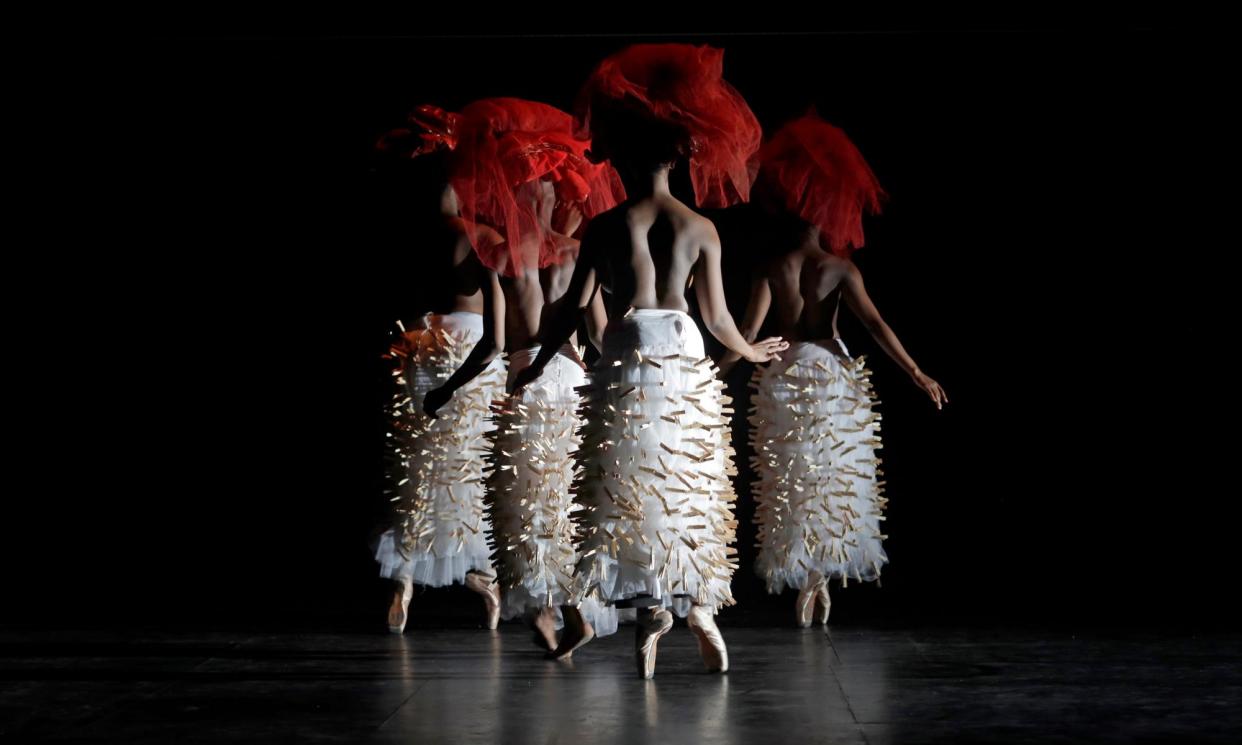Mamela Nyamza: Hatched Ensemble review – The Dying Swan in fine feather

At times, Mamela Nyamza’s Hatched Ensemble are bewitching. Take the opening scene, the cumulative power of repetition as Saint-Saëns’s The Swan plays over and over while a tableau of 10 dancers slo-mo their way across the back of the stage. The music is from Carnival of the Animals but to any dance fan it’s better known as The Dying Swan, and loaded with significance. The trappings of European classical dance are on display: the pink satin pointe shoes, the net skirts – although in a meeting of the sublime and the mundane, these skirts are covered in clothes pegs which look like fringing that quivers and shakes as dancers bourrée on the spot, making tiny steps on pointe (men as well as women).
The South African company absorb such balletic symbols and replay them to us on their own terms. Soprano Litho Nqai hums Saint-Saëns’s melody before moving into African song, with Given “Azah” Mphago playing the mbira on stage. The piece then wanders into more exploratory territory. The dancers change from their white skirts and bare torsos into red costumes, clothes bundled on their heads then hung on a washing line spanning the stage. They scuttle together as a group, eyeball the audience, and finally remove their pointe shoes, wiggle toes and stamp flat feet to the earth.
Hatched Ensemble is the opening show of this year’s Dance Umbrella festival, 46 years young and edgier than ever under the leadership of Freddie Opoku-Addaie, who seems determined to showcase artists you might not otherwise see in the UK. Nyamza’s piece is an expanded version of a solo, Hatched, made in 2007 (and performed at Dance Umbrella in 2011). The original solo was a deeply personal exploration of sexuality, motherhood and tradition. The group piece doesn’t capture the same vulnerability and specificity, but it does offer striking imagery and content to chew on from a nonconformist choreographer. And much like another show recently seen in London, Re:Incarnation from Nigerian choreographer Qudus Onikeku, it demonstrates again that there’s a healthy strand of distinctive, avant-garde dance being made across Africa.
At Barbican, London, until 12 October. Dance Umbrella continues until 31 October


